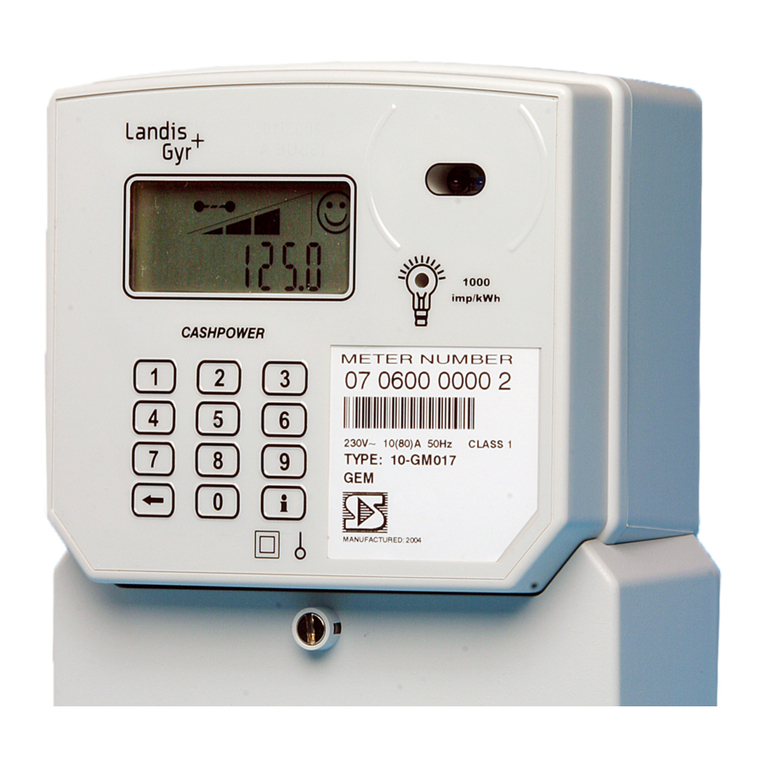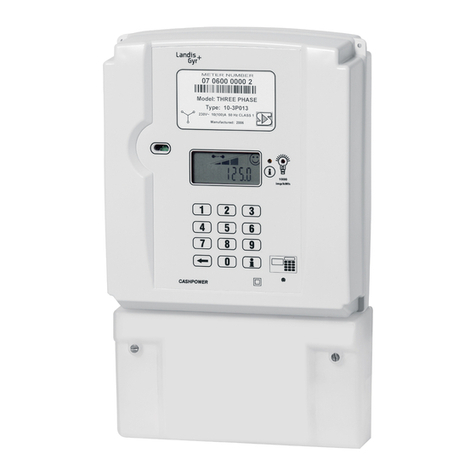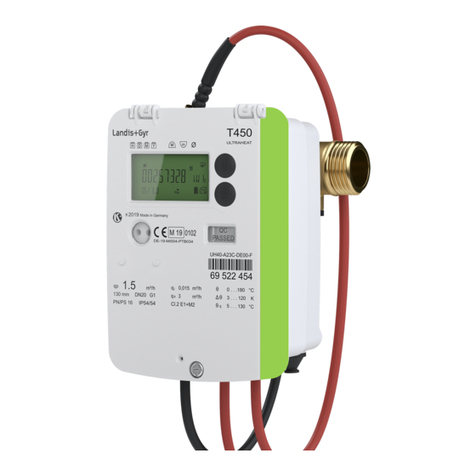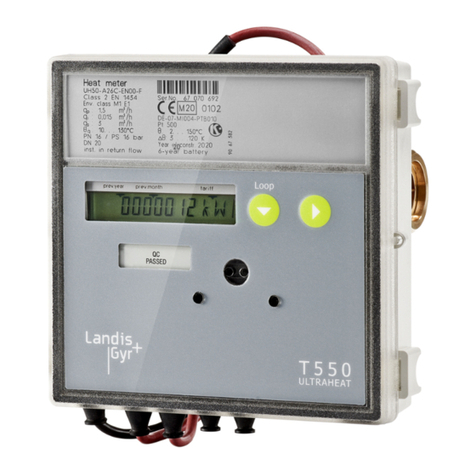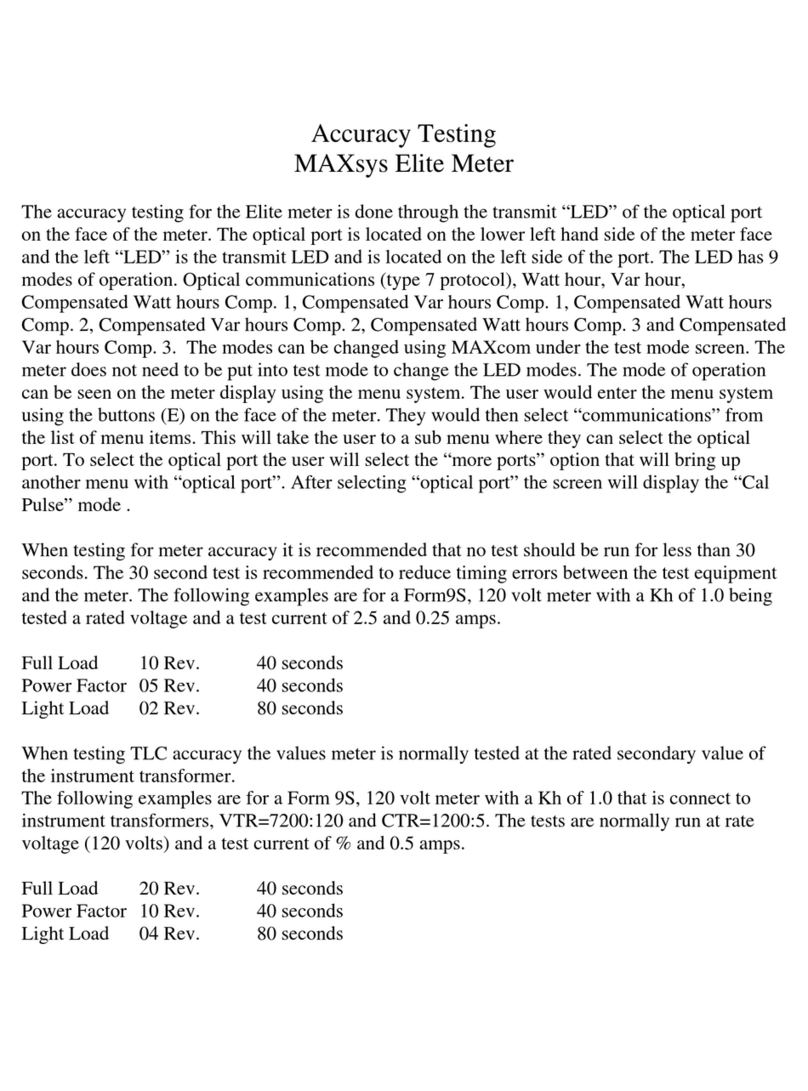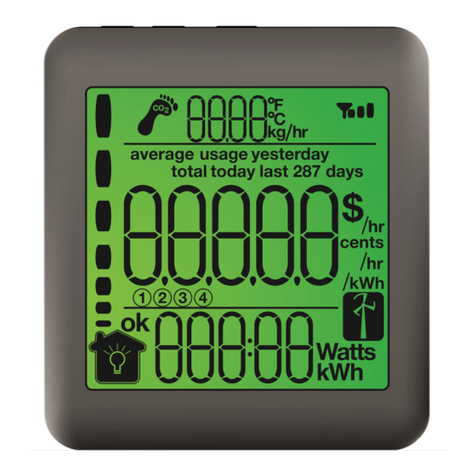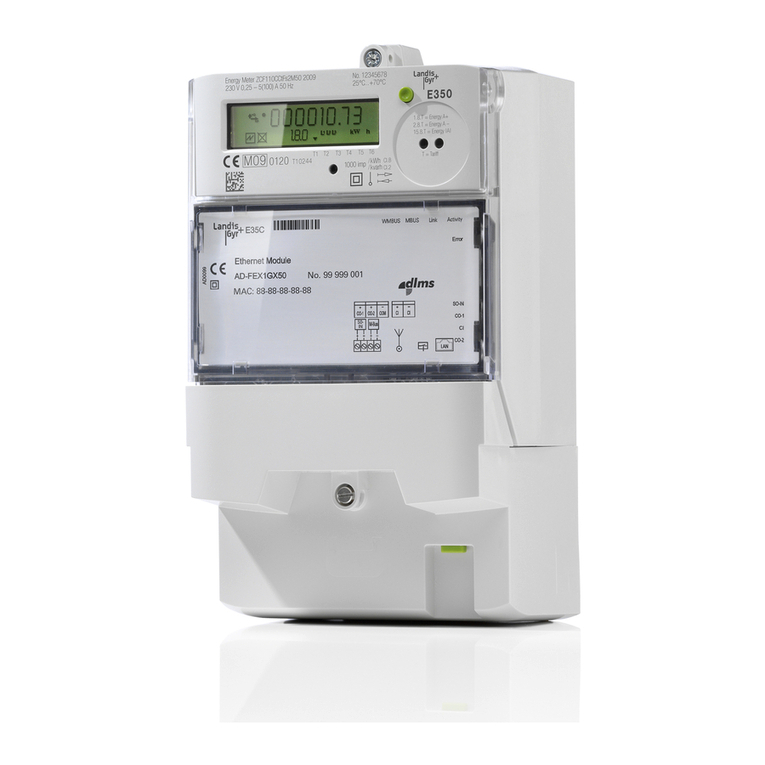Table of Contents Issue: 4 Page 3 of 21
5235 Single Phase Credit Meter –User Manual & Technical Specification © Landis+Gyr
Table of Contents
1Introduction____________________________________________________________5
1.1 Purpose _________________________________________________________________5
1.2 Meter Overview ___________________________________________________________5
1.3 Model versions____________________________________________________________5
1.4 Reference Standards _______________________________________________________5
1.5 20 Year Certification Life ____________________________________________________5
2Safety Information ______________________________________________________7
2.1 Responsibilities ___________________________________________________________7
2.2 Safety Regulations_________________________________________________________7
3Operational Functions ___________________________________________________9
3.1 Measurement_____________________________________________________________9
3.2 Anti-creep _______________________________________________________________9
3.3 Meter Memory ____________________________________________________________9
3.4 Reverse / Export Energy registration __________________________________________9
4User Interfaces ________________________________________________________11
4.1 Register Displays _________________________________________________________11
4.2 Pulsed Output (Option) ____________________________________________________11
4.3 Switching inputs (D model)_________________________________________________11
5Installation____________________________________________________________13
5.1 Construction_____________________________________________________________13
5.2 Meter fixing _____________________________________________________________13
5.3 Wiring _________________________________________________________________13
6Technical Summary ____________________________________________________15
6.1 Technical Summary _______________________________________________________15
6.2 Dimensions _____________________________________________________________16
7Maintenance and Service________________________________________________ 17
7.1 Meter Check_____________________________________________________________17
7.2 Meter Testing____________________________________________________________17
7.3 Post Installation Configuration Changes _______________________________________17
8Measures in the Event of Faults __________________________________________ 18
8.1 Operating Faults _________________________________________________________18
8.2 Disconnecting the Meter ___________________________________________________18
8.3 Repairing the Meter_______________________________________________________18
9Decommissioning and Disposal__________________________________________20
10 Glossary of Terms and Standards ________________________________________ 21
10.1 Acronyms_______________________________________________________________21
